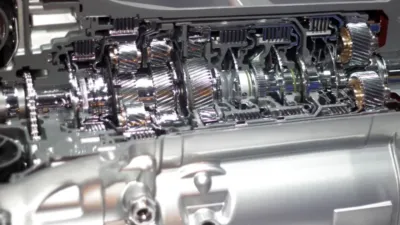October 21, 2024
How does an automatic transmission work?
An automatic transmission is a type of transmission that is designed to change gears automatically, without the need for manual shifting by the driver. It’s a popular feature in modern vehicles, providing ease of use and convenience for drivers who prefer a more relaxed driving experience. In this article, we will discuss the benefits of an automatic transmission, how it works, and its maintenance requirements.

Benefits of Automatic Transmission:
- Ease of use: With an automatic transmission, drivers don’t need to worry about shifting gears, which makes it easier to focus on driving and traffic conditions.
- Comfort: It provides a smoother ride, as the shifts are much more seamless compared to a manual transmission.
- Reduced Driver Fatigue: Since drivers do not need to constantly shift gears, it reduces driver fatigue and makes driving more comfortable, especially in stop-and-go traffic.
- Better Fuel Economy: It can deliver comparable or better fuel economy than manual transmissions.
How Automatic Transmission Works:
An automatic transmission is made up of several key components, including a torque converter, planetary gearset, hydraulic pump, and control system. The torque converter connects the engine to the transmission and helps to transmit power to the wheels. The planetary gearset allows the transmission to switch between gears automatically.
When the driver presses the accelerator, the hydraulic pump provides the pressure needed to engage the appropriate gear, allowing the vehicle to move. As the vehicle accelerates, it automatically shifts to a higher gear, providing better fuel efficiency.
Maintenance of Automatic Transmission:
Maintaining an automatic transmission is crucial to ensure its longevity and optimal performance. Here are the key maintenance tasks you should follow:
1. Check Transmission Fluid Regularly
- Fluid Level: Check the fluid level regularly (usually every 30,000 to 60,000 miles), but follow your vehicle’s manual for specific intervals.
- Fluid Quality: The transmission fluid should be bright red and clear. If it’s dark brown or smells burnt, it may need a change.
- Fluid Change: Most manufacturers recommend changing the transmission fluid every 30,000 to 60,000 miles, though newer vehicles may have longer intervals. Some modern cars use “lifetime” fluid, but it’s still wise to check periodically.
2. Check for Leaks
- Leaking fluid can quickly lead to a transmission failure. Regularly inspect the area around the transmission pan, seals, and cooler lines for any signs of leakage.
3. Replace the Transmission Filter
- The filter should be replaced every 30,000 to 60,000 miles, depending on the vehicle’s design. A clogged filter can restrict fluid flow, causing the transmission to overheat and fail.
4. Use the Correct Transmission Fluid
- Always use the type of transmission fluid recommended by the manufacturer. Using the wrong fluid can damage the transmission.
5. Monitor Shifting Behavior
- Pay attention to how the transmission shifts. If you notice any jerking, slipping, hesitation, or rough shifting, it could be a sign of a problem that needs immediate attention.
6. Flush the Transmission (Optional)
- Some experts recommend a complete transmission flush every 60,000 miles. However, it’s essential to follow the manufacturer’s advice, as not all transmissions benefit from a flush.
7. Avoid Overheating
- Overheating is one of the leading causes of automatic transmission failure. Ensure the transmission cooler is functioning correctly, especially if you tow heavy loads or drive in extreme conditions.
8. Regularly Inspect the Transmission Cooler
- If your car is equipped with a transmission cooler, make sure it is free of debris and functioning correctly to keep the transmission at the right temperature.
9. Drive with Care
- Avoid sudden stops, rapid accelerations, or overloading your vehicle, as these can put extra strain on the transmission.
- If you drive in stop-and-go traffic frequently, consider switching to a manual mode if your transmission allows for it, as this may help reduce wear and tear.
10. Check for Diagnostic Codes
- Modern vehicles often come with built-in diagnostic systems. If the check engine light comes on, have the vehicle scanned for error codes related to the transmission.
By staying on top of these maintenance tasks, you can extend the life of your automatic transmission and avoid costly repairs. Always refer to the vehicle’s owner’s manual for specific guidelines related to your make and model.

